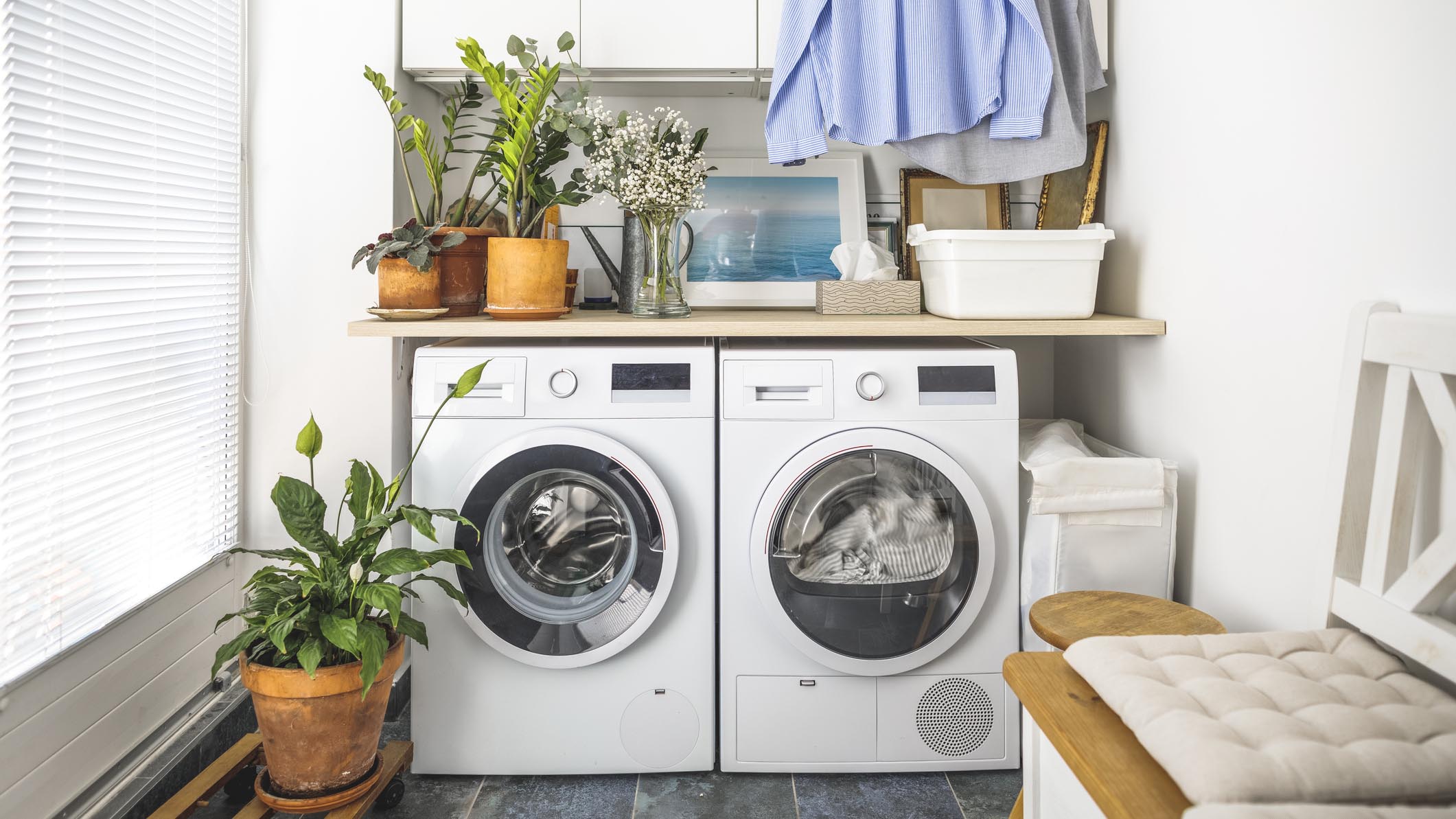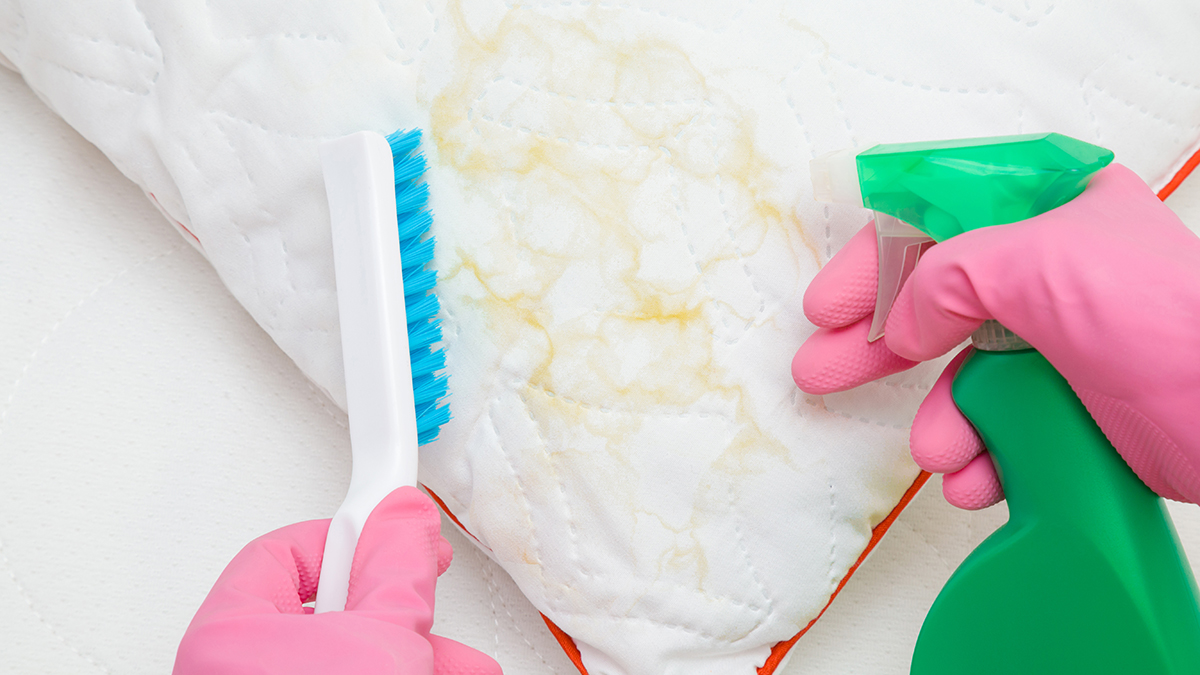Expert explains how to wash and care for pillows so they last longer
Pro tips for how to wash a pillow in the machine and by hand

Learning how to wash a pillow properly takes no time at all and it can save you money in the long-run by helping your bed pillows to last longer. This is important if you’ve invested in the best pillow for your sleep style - you want to get your money’s worth, right?
Here we’re looking at how to clean a pillow properly so that it lasts longer, including which types can be washed in a washing machine and which pillows should only be spot-cleaned and hand-washed.
For expert advice, we’ve turned to Melissa Danielson, Director of Design and Product Development at Casper, one of America’s best mattress and sleep accessories brands, to talk us through all things pillow care.
How often should you wash pillows?
Overtime pillows become a mecca for dust mites, dead skin, sweat, body oils and bacteria, not to mention unsightly stains. Yep, sweat and body oils are two of the biggest culprits behind why pillows turn yellow.
So how often should you clean yours? “Most pillows should be washed every six months, but others, like memory foam, need attention every two to three months.” Danielson says. “It’s good practice to keep more than one pillow on your bed to swap out if one feels like it’s losing its oomph.”
If you have a down or down-alternative pillow, ‘fluffing it’ each morning will help it to regain shape and oomph.
How to wash pillows in a washing machine

Worried that your washing machine will destroy all that beautiful fill inside your pillow? Fret not as you can wash most pillows this way. However, to get the best results – and avoid ruining both your pillow and washing machine – there are a few things to consider first. To start, check the tags or the company’s website for specific cleaning instructions.
Get daily insight, inspiration and deals in your inbox
Sign up for breaking news, reviews, opinion, top tech deals, and more.
“Many pillows will survive in a washer, but they need slightly different care," Danielson explains. "Before throwing any dirty pillow in the wash, know what kind of fill it has and inspect the fabric for rips or tears. You don’t want the fill clogging up your washing machine.
“To avoid unevenly distributed loads, always throw two pillows in at a time. You’ll also want to set the spin cycle speed to a higher setting to remove as much excess water as possible.”
How to spot clean pillows
If you’ve spotted visible marks or stains on your pillow, spot clean them first to get the worst off. “Spot-cleaning can be done with a regular dish towel and a mild soap solution. Gently scrub out the stains, taking extra care with foam pillows as you don’t want them to tear.”
Spot cleaning blood out of a pillow is a bit different though, as Danielson tells us: “Once blood dries it can leave a permanent mark, so it’s key to be proactive. You don’t want the blood to sit for too long because blood clots and it can quickly stick to your pillow.”
Keep these expert tips in mind when spot-cleaning pillows, and many are similar to those recommended for how to clean a mattress:
1. Use cold water
“Always use cold water when removing blood stains from pillows and pillowcases. Hot water can set the stain in further and make it difficult to remove. Once you notice the stain, remove your pillowcase and place the spot under cold running water. This will help flush out any excess blood.”

2. Dab the stain – don’t rub
Take a cold, wet washcloth and dab the stained area — never rub it. “Rubbing the stain can spread the blood and cause it to set further into your pillow,” explains Danielson. “Dabbing the stain can help remove any excess blood that has not yet been soaked in.”
3. Soak it in cold water
Once you’ve dabbed the stain, Danielson recommends soaking your pillow and pillowcase in cold water. “You can do this in a bathtub or basin. Let the pillow and pillowcase soak for about 30 minutes.”
4. Use a stain fighter
After soaking your pillow and pillowcase, it’s time to bring in the big guns and use a powerful stain fighter. “There are several household options you can use (hydrogen peroxide, lemon juice, baking soda, white vinegar, aspirin, etc). We recommend using hydrogen peroxide and water. If you have a darker pillowcase, test out using the hydrogen peroxide on a small section first to make sure it won’t bleach it.”
How to wash down pillows
Made from the soft fibres found under the exterior of a duck, goose or swan, down pillows are one of the easiest types to wash. “They can be cleaned in a washing machine at any washy cycle temperature, but be aware that warm water and hot water can potentially shrink the fabric," Danielson warns.
“Use a mild powder soap and add an extra rinse cycle to rid your pillows of the remaining soap.”
Similar to down pillows, feather pillows include feathers taken from the back and wings of a duck or goose. As Danielson tells us, “Feather pillows can generally be washed the same way as down pillows.
“Any temperature can be used in the washing machine, but a colder temperature is recommended to avoid fabric shrinkage. Use a gentle cycle setting and extra rinse spin cycle to remove leftover suds.”
How to clean memory foam pillows
As their name suggests, this type of pillow contains memory foam, and according to Danielson they need a little extra TLC when it comes to washing.
“Avoid the washer and instead opt for hand-washing or vacuuming and spot treating. Hand-washing is best done by filling your bathtub with water and a low suds, mild detergent.”
To do it, Danielson recommends the following: “Submerge the pillow and allow the water and laundry detergent solution to seep all the way through. Rinsing can be done the same way.”
This video has some extra tips for how to wash pillows without a machine...
How to dry pillows after washing
Once you’ve cleaned your pillows in the washing machine or you’ve spot-cleaned them, it’s time to dry them. “Feather and down pillows can both be dried in a dryer on a no-heat, air-dry setting or tumble-dry low setting,” advises Danielson.
“Use clean tennis balls or dryer balls to fluff the pillows and prevent clumping. Pillows that can’t be dried in a dryer, like memory foam, should be air-dried. If possible, let them hang on a clothesline outside – but only when it’s not humid.”
Extra pillow care tips
Caring for your pillow helps it last longer, and we have some tips on keeping your pillow ultra-fluffy. Beyond learning how to wash it (and how often), consider investing in a good quality pillow protector. These slips of fabric work in the same way as mattress protectors do, and essentially act as a barrier between your pillow and any accidental stains and spills, as well as sweat, facial oils and bacteria.
You can wash your pillow protectors far more often than pillows too, and this will keep your actual pillow healthier and fresher for longer. We'd especially recommend a pillow protector if you're prone to night sweats, or you wear facial moisturisers or oils at night. Same goes for hair products - any moisture that can seep into your pillow means it will need to be cleaned more often.
If you're in need of a new pillow, we've included some of our go-to choices below...
Read more:
Becks is a lifestyle journalist who specialises in writing about wellness and home products, from mattresses to weighted blankets and cooling comforters. She loves a good pillow for drifting off easily at night, as well as a snug duvet for cozier sleeping.
